How to get rid of mice in the country: TOP-5 ways
The appearance of mice on the territory of personal plots, and indeed in country houses - far from uncommon. When summer ends, summer residents harvest, fill the cellars and pantries with vegetables, fruits and other food supplies, and uninvited guests come from nowhere. In the warm season, small rodents, as a rule, have enough food in the gardens, but closer to the fall, they try to find a warmer and more comfortable place with food.
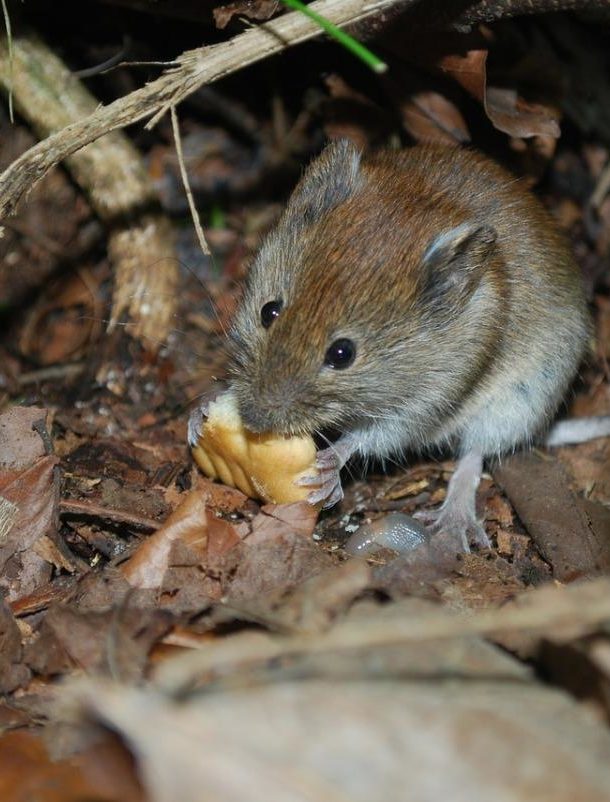
Few owners can immediately determine what is done in the house penetration. But if such a fact takes place, the fight against mice must begin immediately, without delaying a day. Perhaps someone is afraid of them, someone does not see a problem in their presence or pities little animals, but believe me, there are really good reasons for active actions.
Types of pest mice and their features
First you need to figure out what kind of enemy you have to deal with, because, as they say: "mice to mice - discord."
Brownie (home) mouse
Brownie - this does not mean that she lives only in human dwellings. The rodent may well be content with what it finds in the garden or in the garden: plant seeds, young shoots, tasty berries, small insects, their larvae, etc. When comes cooling, rodents find a secluded place in their summer cottages, in farm buildings and here they already feel at ease and do not disdain anything: bulk products, vegetables and fruits, the furniture, textile, paper, plastic, heaters and even candles. The biggest trouble is that they breed too quickly with a large number of offspring (10-12 broods per year, each of which up to 12 cubs). Therefore, it is impossible to underestimate such a problem.
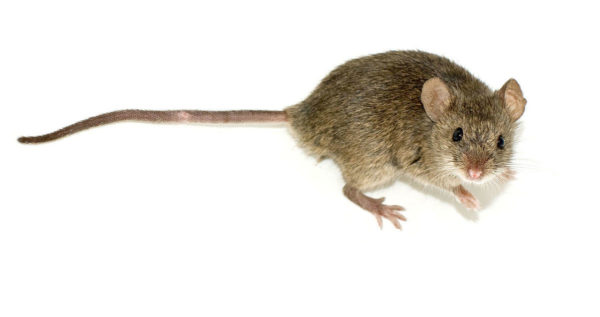
Vole
The field mouse is visually similar to a house mouse, has a direct and immediate relationship with the hamster family. As a rule, it is these rodents that annoy the owners of gardens. They very productively destroy or spoil succulent plant roots and young shoots, they like fleshy tubers and flower bulbs to their liking, and the animals will not refuse the bark of shrubs and trees, seeds and, of course, food supplies that they will find in the house. When dealing with them, it is important to consider that they live in numerous colonies.

Shrew
Shrews, although similar to mice (have a more elongated muzzle), but belong to the family of shrews and by the nature of their activity are more like moles. They are carnivores, feed on insects, larvae and, in very rare cases, plants, but, in search of food, can cause significant damage to the garden by plowing the entire plot and leaving the plant roots without soil and food. Perhaps not every owner deals with a shrew, but some methods of fighting mice also affect these animals.
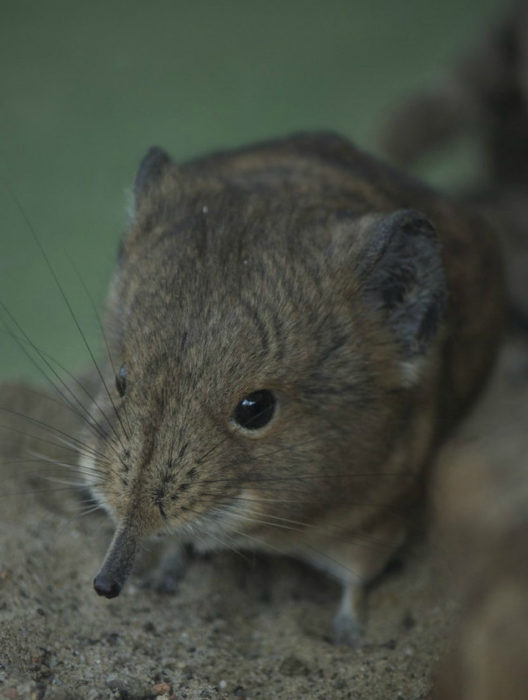
What danger are mice?
Mice are a real problem. Animals not only damage the wallsfurniture and clothes, they eat or infect food products, everywhere they "spoil", they spread the "mouse" smell and breed in huge quantities. It would seem that the tiny woolen lumps have in common with bead eyes and constantly moving tendrils with big problems or diseases? In fact - everything is very serious, because mice:
- Spoil or destroy food. And if wool, excrement, or pieces of dead skin fall into the latter, then it is very likely that people will encounter food poisoning, allergic reactions, and exacerbations of diseases (for example, the respiratory tract).
- Can bring to the house fleacarrying dangerous infections for humans.
- They carry viruses and pathogenic bacteria that can cause dangerous diseases such as plague, typhoid, cholera, as well as various serious poisonings.
- May cause fireas they bite through wiring in places that, at first glance, seem completely inaccessible.
- They leave an unpleasant, specific, difficult to remove smell in the house.
What you need to know about mice?
Now we know what danger small rodents pose, but I want to note a few more interesting points:
- The size of the animals is 6-10 cm, they have an excellent smell, hearing, touch and sense of taste.
- Running speed - 12-13 km / h, long jumps - up to 75 cm, in height - up to 40 cm.
- The animals are good at hiding, and a medium-sized animal can easily crawl into a 10-mm hole.
- In search of food, rodents do not go a long distance from their nest and do not share the territory of existence with rats.
- The incisor teeth in mice grow all their lives and so that they do not grow the jaw, the animal must constantly nibble.
How to determine that mice appeared in the country?
The fact that new residents appeared in the house or nearby it can be indicated by such signs:
- The presence of minks at the walls of the house and outbuildings.
- Characteristic holes in insulation or cladding.
- Traces or already clearly visible paths near the wall.
- Damaged bags or boxes with different cereals or other products.
- Spoiled blankets, furniture, various textiles, including clothing.
- Wiring harness or even some pipes.
- Gnawed crop, which is already in the basement.
- You can find a litter that has a specific smell, both outside the house and inside.
- At night, a characteristic squeak and rustle is heard.
- Fruits are spoiled, moreover, both fruits and vegetables, young plants, especially bulbs of tulips and daffodils.
- The tree bark is gnawed.
- In the chicken coop, there is a regular shortage of eggs.
- Domestic cat and dog reveal anxiety, often sniff, as if looking for someone.

If at least one of the items listed above takes place, urgent need to think and take effective measures to destroy or expel mice. In this case, there is no time for thought and doubt. The fact is that rodents that penetrate a person’s house belong to a group of mice that always live next to people and are attached to them. Animals quickly adapt to any conditions and quite easily tolerate heat, cold, heavy rainfall or prolonged lack of food.
Ways to fight
Now, knowing well with whom we are dealing, we begin to act actively. The fight must be fought in two directions: prevention and direct destruction or exile. In order to determine which way of warfare to choose, it is necessary to clarify some points:
- Room size and type.
- Volumes of food left for storage.
- The presence in the house of children, sick people and pets.
- The number of rodents detected.
No. 1. Chemical (poisons)
The method of chemical destruction of animals can be called one of the most effective. There are a considerable number of various poisons that happen:
- Inorganic (they contain heavy metals in the composition, cause severe intoxication, a large amount is needed).
- Organic (quite a small amount).
- Cumulative action (gradually accumulate in the body of a rodent, leading to disruption of various organs of the animal and their subsequent failure).
- High-speed (affect mice almost instantly).
The chemicals used to fight mice vary in form of release. It can be:
- Powders indispensable for the preparation of lures that will attract rodents to a meal of poisoned foods.
- Gels and creams can attract the attention of many rodents at once. Chemicals with flavor additives and various strong flavors can be used for a long time without loss of effectiveness.
- Pills and BriquettesAs a rule, they have a bright color and an attractive (for mice) smell. They are convenient to use in places inaccessible to humans.
- Liquid poison mixed into water, while limiting the access of animal pests to other sources of drinking.
- Sprays and Aerosols, mainly used by the humane owners of cottages, gardens and gardens. Preparations whose active substances are methyl salicylate and nonivamide cause nausea, vomiting in rodents and cause them to retire from the site they like.
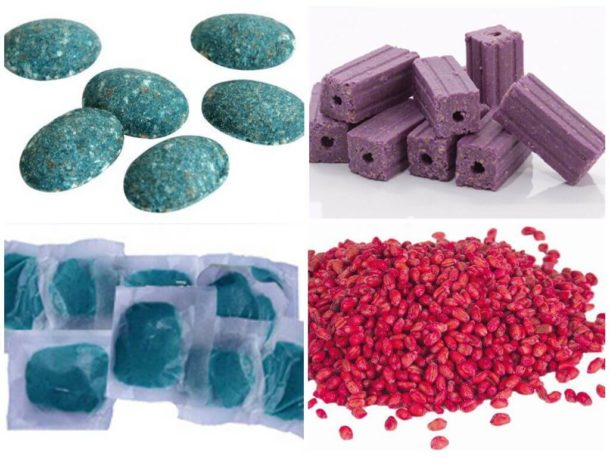
It is important to consider that repellent substances do not poison mice and do not reduce their number, but simply force them to leave a specific territory, and therefore, move to another
The most effective poisons include:
- “Rat Death”, “Biorat”, “Storm”, “The Nutcracker”. The active component of the drugs is brodifacumwhich causes suffocation and internal bleeding. Animals die after 7 days after taking the bait.
- "Zookumarine Neo", "Zoopast" - anticoagulant, a highly toxic poison, is a mummifying agent.
- “3D-Ratzid”, “Anti-rodent”, “Blockade”, “Absolon”, “Clean House”, “Rattidion” - are much more toxic than the previous drug, their active substance is bromadiolone - anticoagulant of the second generation.
- "Ratindan", "MEF", "Rotendant" - one of the most toxic drugs, the active substance of which is diphenacin. In powder form, it is dangerous for both animals and humans.
- Means "Efa" are grains soaked in poison. The basis of highly toxic poison - ethylphenacin, therefore, it is important that the product does not get on human skin. The drug has proven itself with prolonged use.
- “Tsunami”, “Tsunami-Extra”, “Ratol” - are considered one of the best accumulative means for fighting rodents. The current basis of special tablets disrupts the circulatory and cardiac systems of the rodent, while the drug is harmless to humans.
Tools such as Mortorad, Storm, Mouse Death, The Nutcracker, Rat Death, are marketed as mummifying. In any case, this is the five most effective means for use in the country, if you do not take into account the drugs used by professional specialized services: Goliath or Deratomine.

For those who decide to fight rodents with the help of poisons, it is important to observe the necessary precautions as much as possible, carefully study the manufacturer's recommendations, and carefully prepare the room itself and be sure to take care of the safety of people and pets
Recipes of poisons "from the people":
- Sugar - 1 part, flour - 2 parts, gypsum - 6 parts (you can mix flour and putty) or make a mixture of sugar, flour and soda.
- Powdered sugar - 1 part, flour - 2 parts, quicklime - 6 parts.
Lures made in this way are thrown to mice and they are eager to eat them. Nearby, it is imperative to supply water. Once in the animal’s stomach, the mixture hardens, clogging the digestive organs in the first case, and corrodes their mucous membrane in the second.
- Cork cork from wine or champagne is finely chopped and fried in oil. The mouse eats such a treat and gets indigestion and a sad end.
- The same cork can be crushed and “masked” by mixing with any grits.
- Barium carbonate (5 g), flour (20 g) and melted fat (30 g) are mixed to form a poisonous mixture from which balls are formed. The latter are best placed near rodent minks.
- Cook a “treat” plaster, dry potatoes and cinnamon.
- A mixture of dry putty and flour (1: 1) with the addition of salt and water.
- Foam cut in small pieces soaked in fragrant sunflower oil is suitable.
No. 2. Repellers
Technologies do not stand still and many companies offer a considerable selection of devices that are quite effective in combating small rodents and at the same time completely safe for any animals and people. When choosing a suitable device, it is necessary to take into account its main characteristics:
- Safety and ease of use.
- The presence of a power source.
- Signal frequency.
- The most effective range.

We are talking about special repellers:
Ultrasonic
The ultrasonic pulse that the device sends disconcerts the mice, causes them to panic, fear, and forces the sigal to leave the territory. Man does not hear and does not perceive high-frequency vibrations, but to rodents they cause a lot of inconvenience. The main advantages of such devices include:
- Convenience and simplicity in operation.
- Use for a long period of time without interruption.
- Environmental friendliness.
- Safety for humans and pets (note: decorative rodents are at stake).
- As an additional bonus - the impact on mosquitoes, flies and other flying insects.
So that small pests do not get used to the generated sound, as a rule, its frequency periodically varies in the range from 20 kHz to 70 kHz. In addition, models that are equipped with light indicators have been released - flashes that appear differently not only blind the mice, but also do not allow them to navigate well in space.
They have high-frequency devices and small "minuses»That you need to know about when choosing one or another device:
- A large number of textiles, upholstered furniture, paper products and other similar items in the room reduce the efficiency of the device, since they all actively absorb ultrasound.
- The impulse that the repeller sends cannot pass through the walls, but only reflects from the latter, so the action of the device is limited to the walls of a particular room.
Conclusion: the fewer obstacles to ultrasound, the better. And do not rush to the results. Despite the fact that the device begins to operate from the first minutes, for the complete expulsion of rodents, constant repeller operation will be required for several days, or even weeks
A good rating from users received:
- Model range “Tornado” and “Typhoon” (devices have a wide frequency range, are effective when working in both large and small rooms.
- A series of Grad devices (they have a distinctive sound sequence, can work from different power sources (mains, batteries, battery), some devices additionally have bright LEDs).
- Chiston line of instruments (continuous supply of the most powerful signal is used, which allows you to drive out rodents as quickly as possible).
- "ElectroKot", "Ecosniper" (it is possible to work in several modes - pulse, continuous and combined).
- "Weitech" (convenient to use, affordable, compact in size, a universal repeller of mice and insects) and many others.
Electromagnetic
For the operation of electromagnetic devices, it is necessary to have electrical wiring through which pulses are transmitted.The radiation sent by the devices acts on rodents by analogy with ultrasound scares: they cause anxiety and discomfort in animals, and panic attacks cause mice to leave their homes. Benefits:
- Environmental friendliness and lack of harmful substances.
- Long work without interruptions.
- Lack of absorption of impulses upholstered furniture and textiles.
- Large coverage area (without affecting the operation of various electrical appliances).
- The ability to affect rodents in the voids of walls and ceilings.
- Blow on crawling insects.
Concerning disadvantages. The main and very significant problem is the need for wiring, which should be laid around the perimeter of the entire room, in extreme cases - at least along the longest wall. If this condition is not met, all efforts will be in vain.
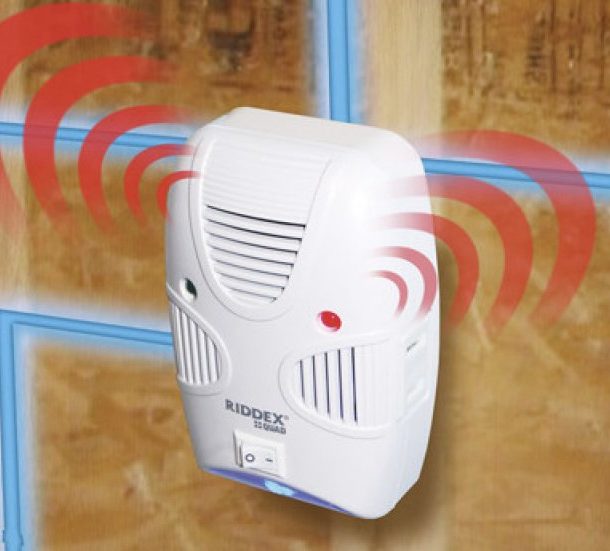
The most popular and effective models:
- “Riddex Plus” - the device has a plastic shockproof housing, resistant to humidity - up to 90% and temperature differences - from -35 to + 45 ° C, the area of the repeller is 80-200 square meters. m
- "EMR-21" - a reliable device with a light indicator, operating in a radius of 230 square meters. m
- "Digital" - a budget version of the repeller with a range of 80 square meters. m. perfect for summer cottages.
- “Range 3”, “Hawk 200” - a convenient compact model, with enough power to use it, both in small and large areas.
Combined
Obviously, the best choice is combined devices, which have collected all the “advantages” of the two previous varieties. And, although the price of the offered devices is slightly higher, it is more than compensated by their versatility and speed of action. It is worth noting here:
- "Chiston-2."
- "Tornado 1200."
- "Riddex Quad."
- Ultrasonic Rodent Repeler
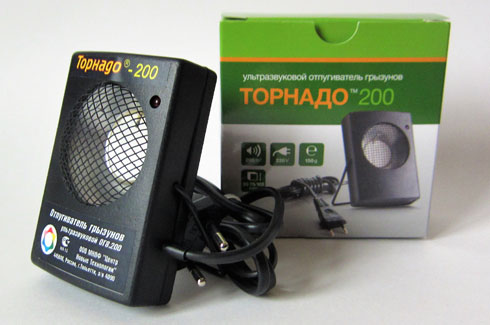
No. 3. Mechanical (traps and mousetraps)
Mechanical methods of extermination of rodents today do not lose their relevance and, on the contrary, are improved and modified. The list of designs is considerable and I want to consider it more closely. So:
Mousetrap with a frame
A well-known device for catching rodents. On a wooden base (maybe plastic or metal), a steel frame is fixed that kills the rodent, and a spring. This design has long been well known to everyone, so many people know that often it can:
- Jam.
- Just fix the “fake call” while the mouse manages to drag the bait.
- Not be particularly effective in a massive pest outbreak.
In addition, we should not forget that the corpse of the animal must be removed from the mousetrap and disposed of. And not everyone can do it.

Mousetrap Pipe
This invention can be safely used by people who experience panic horror, both in front of living and dead animals. An opaque plastic pipe, a bait and a mechanism that does not allow the animal to get out back are simple components, the effect is obvious, visually the result does not cause disgust. An additional structural element in the form of a striking device is possible.
Swing trap
This device is called differently: "swing", "springboard", "water captivity", etc. But the principle of action is the same everywhere, and the trap itself is quite effective - in a short period of time you can catch a large number of small rodents. It is not difficult to make a design on your own. To do this, you need:
- Any capacity such as a bucket, capacious, which will serve as the basis for the trap.
- The rail is small in thickness, you can even use a ruler.
- A knitting needle or wire that does not bend.
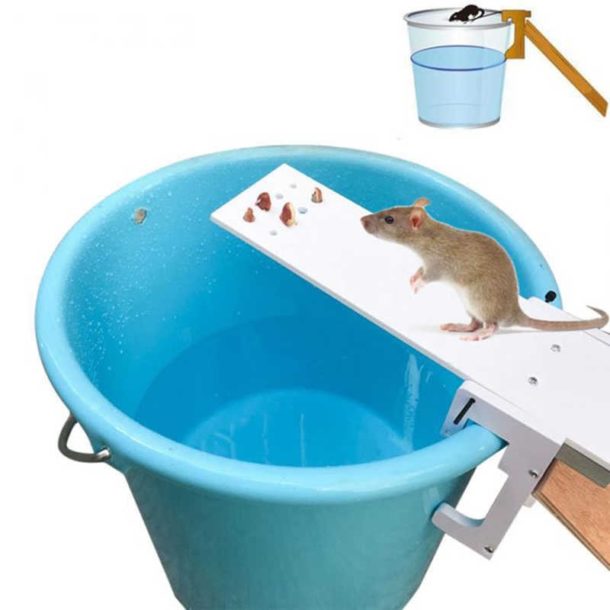
During assembly, the wire is securely fixed perpendicular to the rail. The resulting element is mounted on the bucket so that the “swing” ruler touches only one of its edges. At its other end is a rodent bait. And then the structure is installed in the right place so that animals can freely enter the springboard from a stable side and move directly into the trap.Very often, the bucket is not left empty, but some water is poured into it.
Loop trap
The device is really very simple structurally. As a rule, this is a wooden block having one or more holes. Hinges from a very thin, but strong wire are fixed with a thread inside the “mink”. Since the mouse will have to gnaw the thread to get to the “yummy”, she herself will start the mechanism of her destruction - the noose will kill her anyway.

Traps and Live-Cells
Both traps are borrowed from hunters:
- In the first case, we are talking about mini-analogues of traps for large predators. The design includes: a strong base, which has sharp teeth around the perimeter, a platoon mechanism and a bait located inside the device.
- In the second - this is the most common cage of steel, small in size, with a hook inside to secure the treats and the automatic door. The latter is triggered when the mouse wants to steal food.
The second device, in contrast to the first, relates to humane methods of getting rid of rodents. Caught animals do not cause physical harm and can be released into the wild, as far as possible from their home.
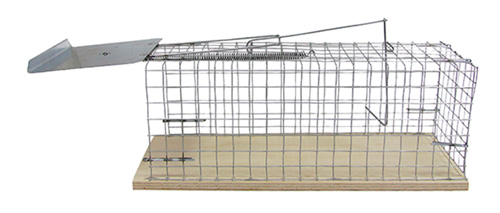
One of the popular models is a trap made of plastic "House". The tube has a certain bending angle and two doors - at the beginning of the structure and at the end. In the depths, near the back cover, lies some kind of mouse treat and the front door opens. When the rodent approaches the bait, the front door slams (automatically). It remains only in time to release a small pest.

Trap bottle
A simple adaptation on the shoulder to any craftsman. Glass and fit plastic bottle volume from 0.5 to 2 liters, inside which you can pour a little sunflower oil, sprinkle seeds, in general, put the bait. Then the bottle must be installed at an angle so that the neck is higher, fixed, and for the mice you can even make peculiar steps. Slowly, but surely, the goal will be achieved.
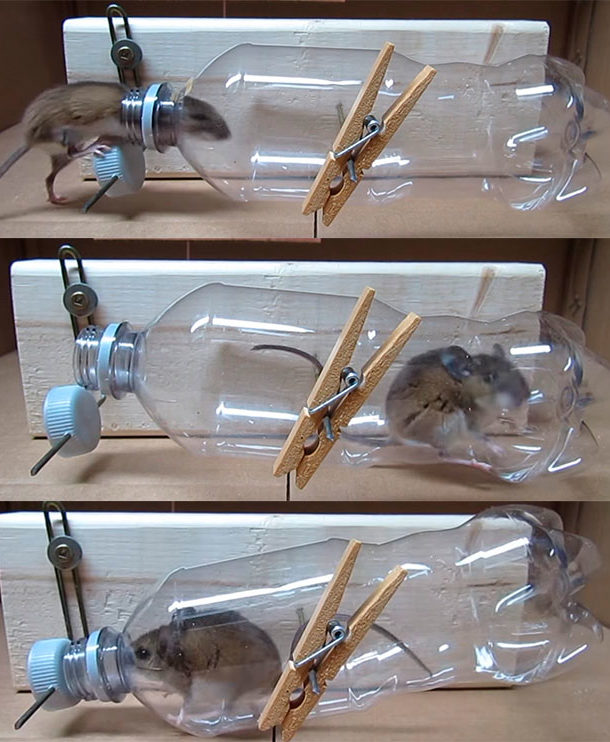
Livestock can
To organize a trap, you need to take a glass jar and a coin or piece of cardboard with a small recess. The can is turned upside down, a treat for the animal is placed inside, one edge of the can is lifted and installed on the edge of the coin or a vertically placed piece of cardboard. Everything must be done very carefully, because the design is very unstable and it will not be difficult to upset the balance even for a small mouse, which is immediately caught.

Electric trap
Today, far from the last place in the series of effective traps is occupied by electric traps. They are much better than their mechanical brothers and sisters. In order for the trap to begin work, it is necessary to fill it with bait and connect it to the power system (mains). Inside the device are live contacts. The animal, making its way to the treat, will certainly touch them and will be killed by the discharge of current. Most models are equipped with signaling LEDs to alert when the device is triggered.
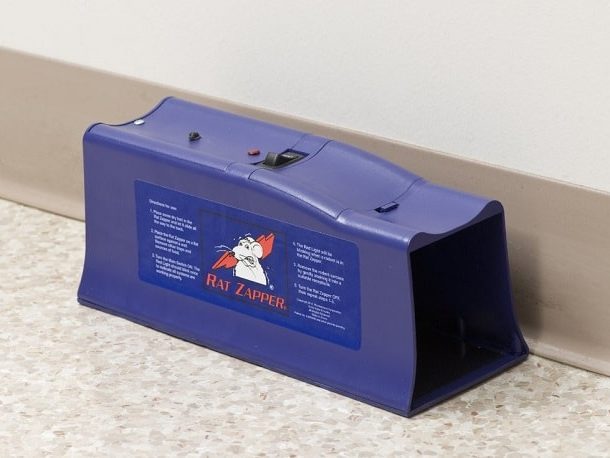
Glue traps
Talking about the methods of catching mice, you can not go past the glue traps. Such devices are not distinguished by humanity, but belong to a number of popular and budgetary methods of extermination of rodents. Everything is quite simple. Thick cardboard strips are covered with a layer of fragrant glue. Moreover, the aromas can be very diverse, the main thing is that they attract animals. And those, going on a smell, fall into a trap - a sticky layer from which they are not destined to get out.
In many cases, you can use not only ready-made traps, but also separately glue in a tube for rodents. It can be applied in different places and be especially careful not to get caught by yourself.
Number 4. Folk
Everything that is not manufactured commercially in a finished or semi-finished form can be attributed to folk methods of fighting mice. The most popular options are listed below:
- Wood ash strongly irritates the paws of animals, and coma, their smell is unpleasant to them. Therefore, if you scatter it on mouse trails and inaccessible places, rodents will begin to avoid them.
- Spikes of burdock they will not allow animals to enter the country, since they firmly cling to the fur coat of animals, which does not please the latter at all.
- It will not be superfluous to process the entrances to minks and walls bleach.
- Branches of Ledum, Blackcurrant or Coniferous Trees it is good to place not only directly near the minks, but also to shove them deeper. Such a flavored barrier will scare away rodents, and spruce or pine legs will also become an obstacle to movement.
- Wormwood, mint or elderberry essential oil mice do not tolerate at all. If you put rags in the minks on which the listed oils are applied, most likely the mice will run away from their "hatched nests" and for a couple of months they will definitely not appear in these places. This tool is great for prevention.
- Use gives a good result. hot pepper (the so-called "smoking"). A large pod of pepper is wrapped in several layers of a newspaper, placed in a container (such as a bowl) and set on fire. It is not necessary to set up a fire, but it is desirable that the smoke stay in the room for a couple of days. The method is relevant for the expulsion of rodents from basements and cellars.
- Similarly with the previous method, the desired result can be achieved using sulfuric checkers. After its decay, the room is not aired for 1-2 days, and the mice run like "from a sinking ship."
- You can scare away pests with ointments Vishnevsky or birch tar. It is only necessary to process with them skirting boards, sills, the lower part of the furniture.
- To protect the site from small rodents, fit: reeds, pine branches, kerosene-soaked fabric or creole wooden sawdust, tops of tomatoes and elderberries. Euphorbia, black root, cilantro (coriander), wormwood, mint or black currant will not hurt to plant along the perimeter of the territory.
- In the house it is worth spreading out on the bedside tables, in the cabinets, in the corners or along the walls: garlic, tansy, chamomile, drip a little peppermint alcohol or peppermint oil.

No. 5. Biological
This item is dedicated to animals that can be used to catch rodents. Here, in fact, there are quite a few options: cat, polecat, dogs of hunting breeds (fox terrier, dachshund).
- First of all, of course, we are talking about cats and cats. By the way, it is noticed that cats are more responsible hunters than cats. And the simplest, without regalia and family crests, outbred cats cope with such work best. But those who want to get a thoroughbred animal and take it with them to the cottage for catching mice should pay attention to such breeds as Siberian, Kurilian Bobtail, Russian Blue, Maine Coon, Bengals and Siamese, British Shorthair, Abyssinians, etc.
- Super-mousetraps are also ferrets. These small, very nimble animals are a nightmare for small rodents. With dogs and cats, these animals may well find a common language, but if there are chickens in the household, you should immediately refuse the assistant of the marten family immediately, without even thinking.
- Many representatives of the dog world are excellent rat-catchers, but if, on their way a mouse meets, she has no chance of rescue. The most avid hunters of small rodents: some breeds of terriers and dachshunds, dwarf pinschers, fox terriers, and rat-catchers (Andalusian and Prague rats).
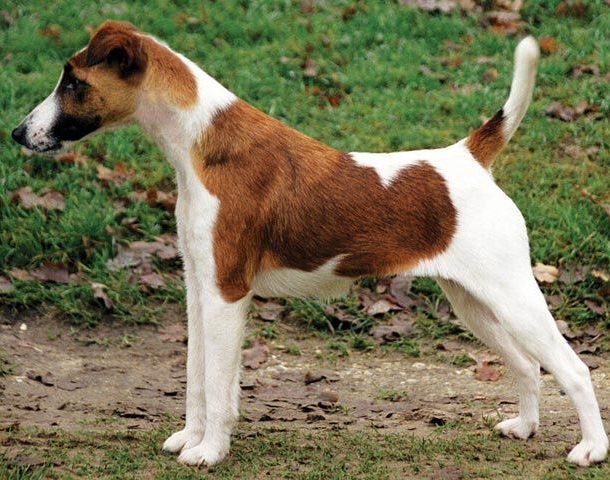
If someone wants to really surprise all the neighbors - let them get a home owl, which is also not averse to profit from small animals. The main thing is to provide that both a kitten and a small puppy can fall into her paws, but there will be no mice for sure.
How to prevent the appearance of rodents?
It may seem to some that it is impossible to win in a war with mice. In fact, getting rid of rodents is quite possible, and with modern "helpers" it will not be difficult at all.It is not necessary to use any one method, you can combine them, choose the most suitable option, add new developments to well-known methods, etc. If you constantly maintain order on the site and carry out preventive work, the fight against rodents will certainly succeed. To do this, you must:
- Harvest in time.
- Do not leave mowed grass and mulch on the site.
- Burn dry grass and plow the ground. Digging will destroy the nests of animals.
- Spill the remaining beds with cold water or a mixture of water with chicken droppings.
- In the house, close the gaps and close the holes for ventilation.
- Store food well closed in a glass or strong plastic container.
- Plant mint and lemon balm between the house and other buildings.
- Use repellers.
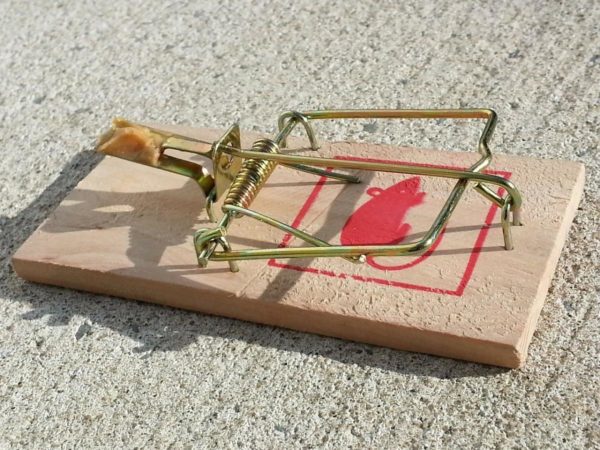
Resist the invasion of rodents - everyone can do it. Do not give up, but rather be patient, useful tips, improvised materials and popular industrial means - and everything will work out!

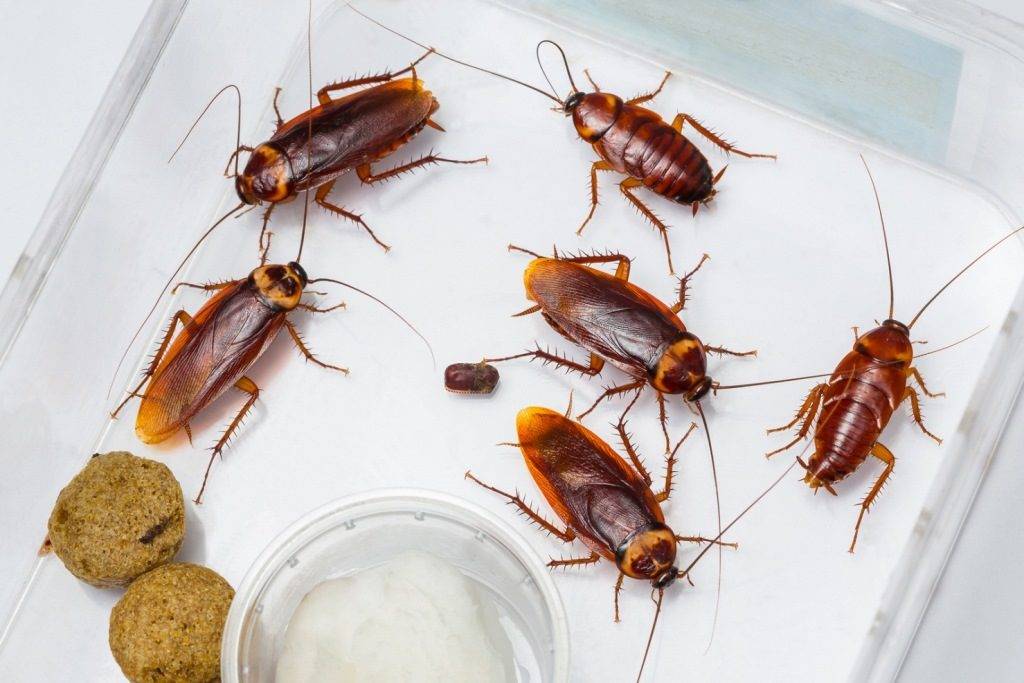


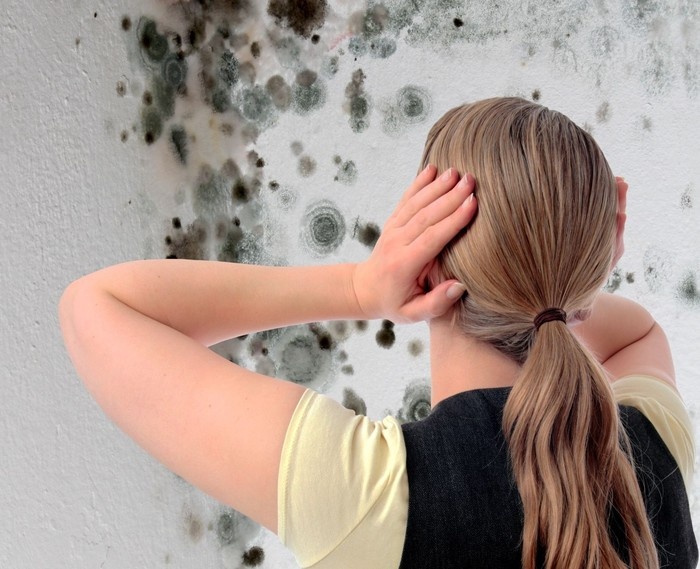

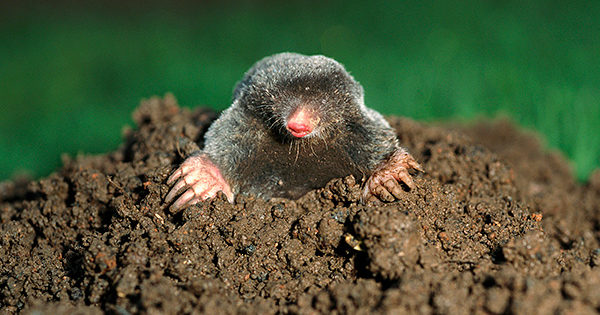
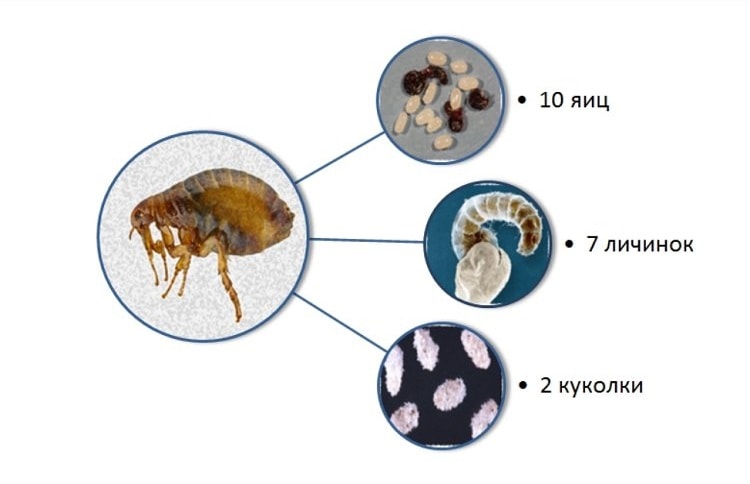
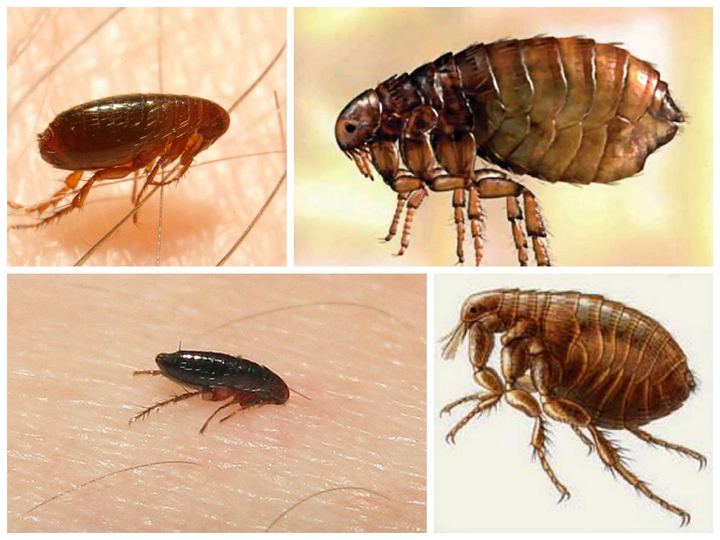
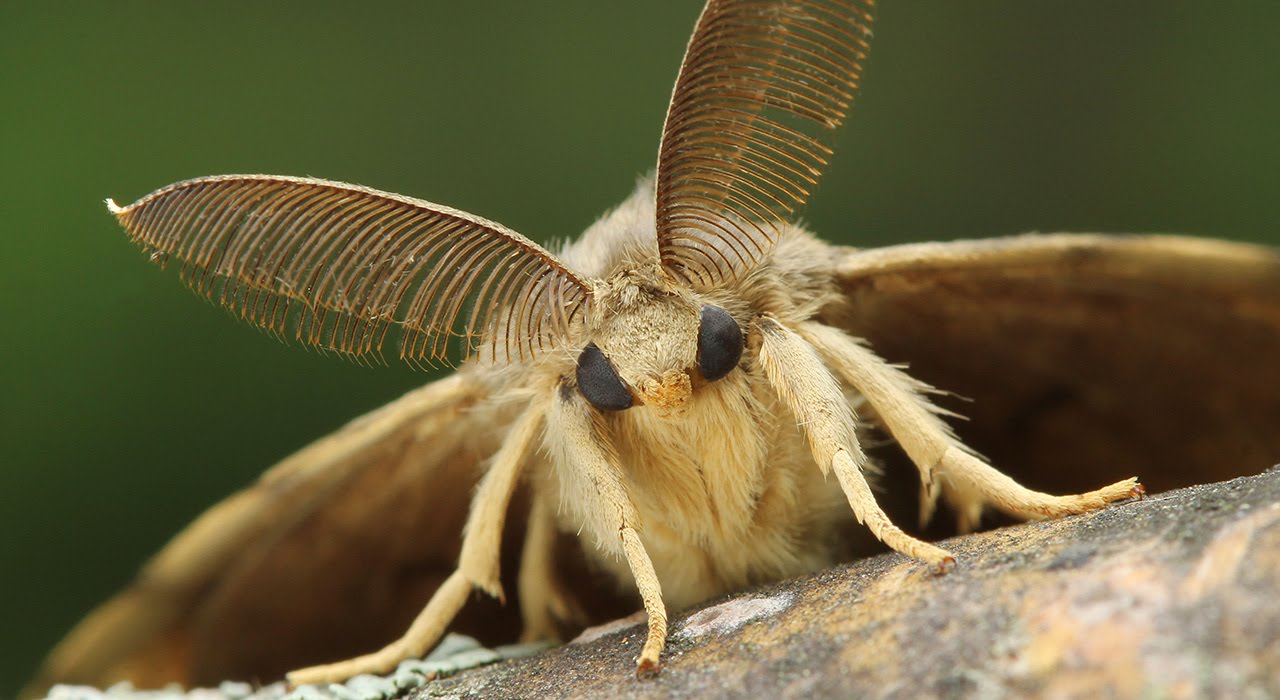
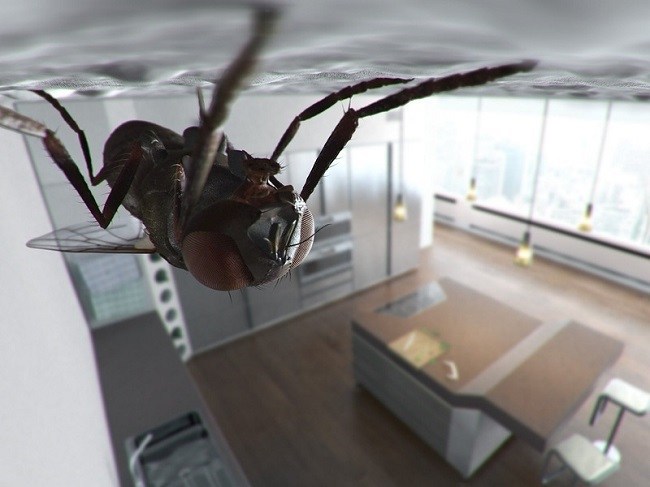
Very cool article! The Tornado, Grad and Weitech ultrasound repellers will very effectively help to eliminate rodents from the premises. Once they helped me a lot to solve this problem. I recommend to everyone!